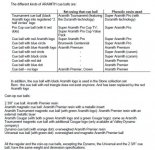I seriously doubt many of you have done any experiments to validate your dislike for the measle ball (assuming you dislike it for it's performance vs it's looks - can't help with the look...).
I have both, a new red dot and a new measle ball. I did a max draw experiment to see which would draw farther. They were virtually identical at about 13 diamonds (130 inches). With mostly consistent draw lengths for over 20 tries each.
The balls do weigh differently (measle at 169g and red dot at 167g). With respect to max draw it made zero difference for me.
It would be much more complex to test complete control over the cue ball but if I had to put money on the answer I would bet the vast majority of this is a self imposed mental barrier rather than a true performance issue.
You are making the mistake of confusing the "red dot" with the "red circle" cue ball. There is a HUGE difference between the two.
That's the problem with these cue ball threads -- far too many people confuse "dot" with "circle" -- i.e. they call a red dot ball a "red circle" and vice-versa.
How can a solid "dot" be confused with a hollow "circle"?
-Sean
